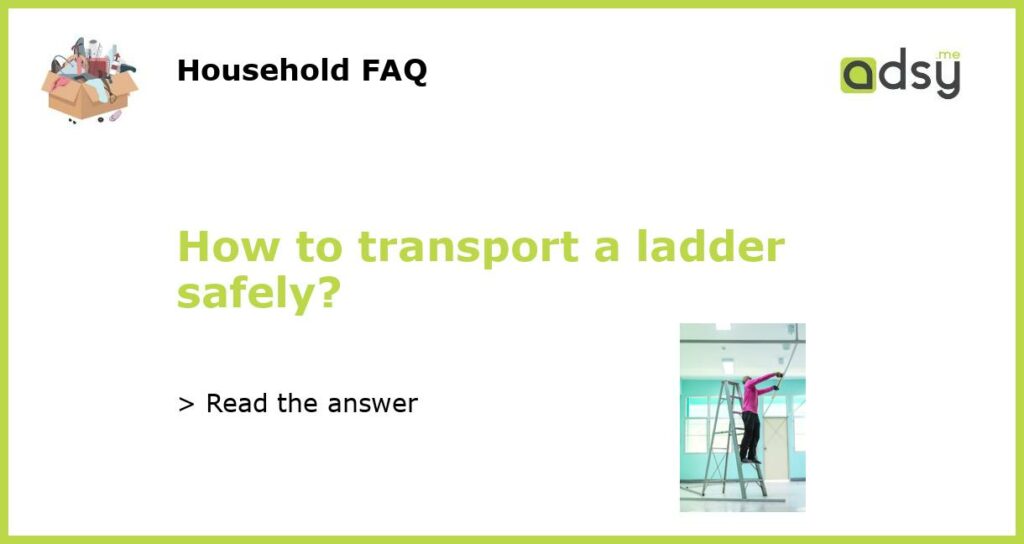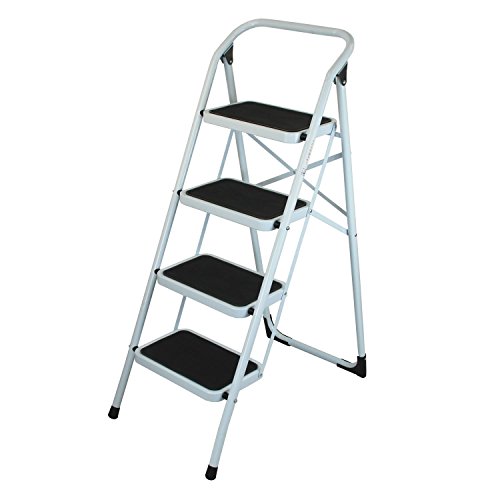Properly Secure the Ladder to a Vehicle
Transporting a ladder safely begins with securing it properly to your vehicle. Start by ensuring that your ladder is clean and free from any debris that could potentially cause damage during transport. Place the ladder on the roof of your vehicle or in the bed of your truck, making sure it is centered and positioned lengthwise.
For vehicles with a roof rack, use straps or bungee cords to secure the ladder to the rack. Wrap the straps or cords around the ladder and through the roof rack, tightening them securely so that the ladder does not move during transport. It is recommended to use at least two straps or cords, with one securing the front of the ladder and the other securing the back.
If your vehicle does not have a roof rack, you can use a ladder rack or a ladder strap system specifically designed for transporting ladders on vehicles without racks. These systems typically involve attaching brackets or mounting plates to the vehicle, which the ladder securely attaches to. Be sure to follow the manufacturer’s instructions for installation and use.
Use a Ladder Rack or Ladder Lock for Pickup Trucks
If you have a pickup truck, utilizing a ladder rack or ladder lock system is highly recommended. These systems provide a secure and stable way to transport ladders, preventing them from sliding around or falling off the truck bed.
A ladder rack is typically installed on the bed of the truck and provides a framework for securing the ladder. The ladder can be placed on top of the rack and secured with straps or bungee cords. Some ladder racks also have built-in mechanisms for locking the ladder in place, further enhancing safety during transport.
A ladder lock is another option for pickup trucks. This system involves attaching a specially designed bracket to the tailgate or bed of the truck, which the ladder securely attaches to. The ladder lock holds the ladder in place and prevents it from shifting or falling during transportation.
Use Ladder Stabilizers or Ladder Levelers
In addition to properly securing the ladder to your vehicle, it is also important to ensure that the ladder itself is stable and balanced. Ladder stabilizers or ladder levelers can help achieve this.
Ladder stabilizers are attachments that can be added to the top of extension ladders to increase their stability. They create a wider base of support by extending the ladder’s reach on both sides. This added stability reduces the risk of the ladder tipping over during transport.
Ladder levelers are devices that can be attached to the bottoms of ladders to compensate for uneven ground. They use adjustable legs to ensure that the ladder remains level and secure, even on uneven surfaces. Using ladder levelers can help prevent the ladder from shifting or falling off the vehicle while in transit.
Check Your Local Traffic Laws
Before transporting a ladder, it is important to familiarize yourself with the traffic laws and regulations in your local area. Different regions may have specific requirements for securing loads on vehicles, including ladders.
Some common regulations include speed limits, maximum overhang limits, and requirements for using flags or warning signs on long or oversized loads. Familiarize yourself with these regulations and ensure that you comply with them to avoid any legal issues or fines.
Drive with Caution
Once your ladder is properly secured, it is essential to drive with caution to ensure a safe transportation. Keep in mind that the ladder may affect your vehicle’s handling and wind resistance, so it is important to adjust your driving accordingly.
Drive at a moderate speed and be mindful of any sudden acceleration, braking, or turning that could cause the ladder to shift or fall. Stay in the right lane and maintain a safe following distance from other vehicles to minimize the risk of accidents.
It is also a good idea to periodically check your ladder during stops or breaks to ensure that it remains secure and stable. If you notice any signs of instability or movement, pull over safely and address the issue before continuing your journey.






